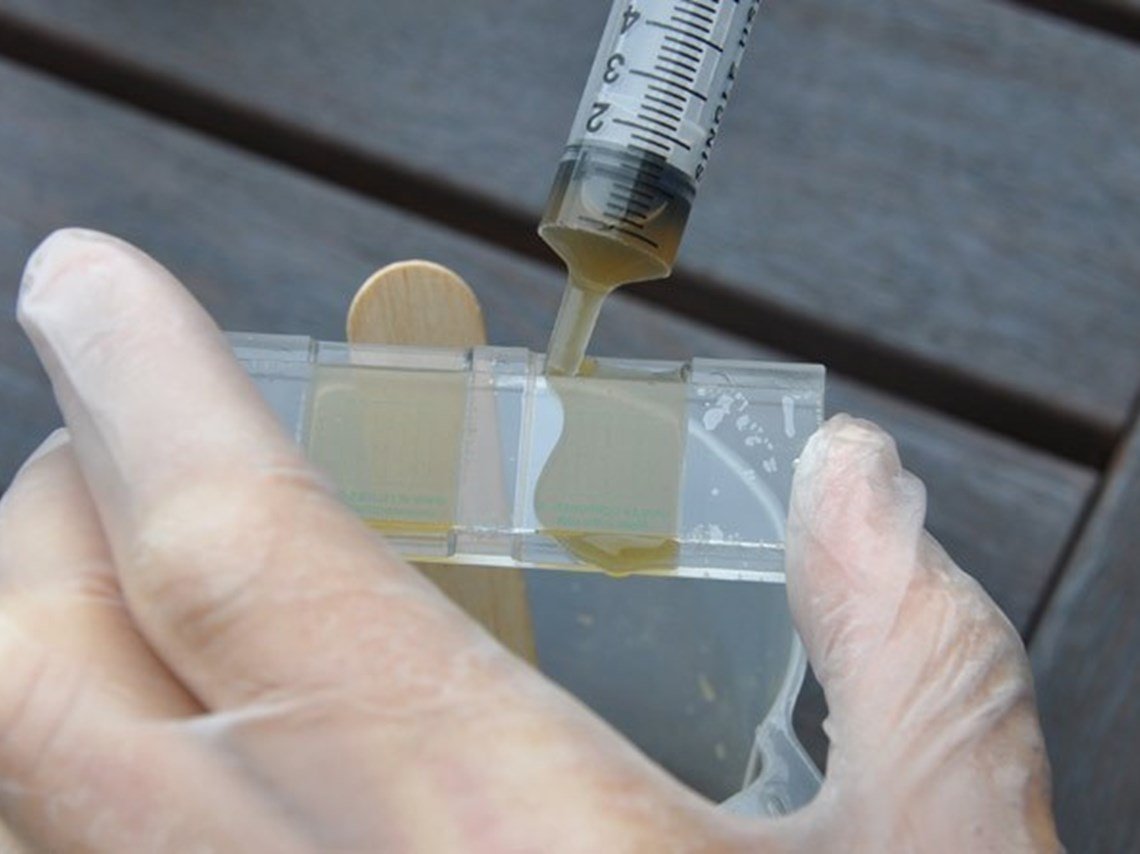How to Deworm Goats: Effective Methods and Techniques
Discover > Raising Goats > How to Deworm Goats: Effective Methods and Techniques
Goat farming is a rewarding endeavor, providing meat and milk for many households. However, maintaining the health of your goats is crucial for a successful operation. One of the most significant threats to goat health is the presence of internal parasites, commonly referred to as "goat worms." These parasites, which include stomach worms like barber pole worms, can wreak havoc on your herd if left unchecked. In this comprehensive guide, we will explore the essential aspects of deworming goats, from identifying and assessing internal parasites to administering dewormers safely and effectively. We will also delve into monitoring and evaluating the effectiveness of deworming practices and ensuring the safe consumption of goat products. By the end of this article, you will have the knowledge and tools to maintain a healthy and thriving goat herd.
Identifying and Assessing Internal Parasites
Goats are susceptible to various internal parasites, with barber pole worms being a prominent example. These worms, scientifically known as Haemonchus contortus, are notorious for their blood-sucking habits, which can lead to severe anemia and even death in infected animals. Other worms, such as worm larvae, can also affect your goats' health. To effectively deworm your goats, it's essential to recognize these common internal parasites and understand their life cycles.
Fecal egg counts (FECs) are a valuable tool for assessing the worm burden in your goats. By analyzing a fecal sample, you can determine the number of worm eggs present in their digestive system. This diagnostic method helps you gauge the extent of the worm infestation and make informed decisions about when and how to administer dewormers. Understanding how FECs work and how to interpret the results is critical for effective parasite management in your herd.
Deworming Strategies for Optimal Goat Health
Not all dewormers are created equal, and each type targets specific internal parasites. To make the right choice, it's essential to understand the types of worms your goats are dealing with. For example, if barber pole worms are a significant concern, you'll need a dewormer effective against these blood-sucking parasites. Other worms, like stomach worms and other internal parasites, may require different treatments. Here's a breakdown of some common dewormers and the parasites they target:
Ivermectin: Effective against a broad range of internal parasites, including barber pole worms, stomach worms, and worm larvae.
Levamisole: Often used for barber pole worm control.
Fenbendazole: Effective against various gastrointestinal worms, including some resistant worms.
Moxidectin: Targets barber pole worms, worm larvae, and other internal parasites.
Understanding the specific actions of these dewormers allows you to tailor your deworming approach to your herd's unique needs.
Deworming frequency and timing play a vital role in preventing the development of dewormer resistance in your herd. Overusing dewormers or using them indiscriminately can lead to resistant worms, rendering these treatments ineffective over time. It's crucial to establish a deworming schedule that takes into account the life cycles of the parasites and the age and health status of your goats.
Regular fecal egg counts (FECs) can help you determine the optimal timing for deworming. By monitoring the worm burden in your goats, you can avoid unnecessary treatments and reduce the risk of resistance development.
Resistant worms pose a significant threat to goat health. These parasites have developed the ability to withstand the effects of certain dewormers, making them challenging to control. To combat resistant worms, it's essential to implement a dewormer rotation strategy. This involves using different classes of dewormers in succession to target different parasites and reduce the likelihood of resistance.
For example, if you've been using ivermectin for a period, consider switching to a different dewormer class like benzimidazoles for the next treatment. By regularly rotating dewormers, you can maintain the effectiveness of your parasite management program and keep your goats healthy.
Administering Dewormers Safely and Effectively
Administering the correct dosage of dewormers is crucial for their effectiveness and for preventing potential harm to your goats. Dosage instructions can vary depending on the dewormer's type, the goat's weight, and the severity of the infestation. Always follow the manufacturer's recommendations and consult with a veterinarian if you are unsure.
Common methods for administering dewormers include oral drenching, injectables, and medicated feed. Oral drenching involves giving the dewormer directly into the goat's mouth using a syringe. Injectables are administered via injections, typically in the neck muscle. Medicated feed is another option, where the dewormer is mixed into the goat's feed.
Administering dewormers to adult goats can sometimes be challenging, especially if they are uncooperative. Here are some tips to ensure compliance and make the process smoother:
Restrain Safely: Use proper restraint techniques to keep the goat still during administration. Avoid causing unnecessary stress or harm.
Administer Accurately: Ensure you deliver the full dosage, and double-check the syringe or applicator for any air bubbles that could affect accuracy.
Choose the Right Time: Administer dewormers when the goat is calm and less likely to resist, such as during feeding.
Palatability: Some dewormers have a more palatable flavor than others, making them easier to administer. Consider the taste preferences of your goats.
Be Calm and Confident: Approach the goat calmly and confidently to reduce anxiety and resistance.
Pregnant and nursing does have unique deworming considerations. It's essential to consult with a veterinarian for guidance specific to your herd, but here are some general considerations:
Timing: Deworm pregnant does before kidding to reduce the risk of transmitting parasites to the kids. Deworming during late pregnancy is typically safe.
Medication Choice: Choose dewormers that are safe for pregnant and lactating does. Some dewormers may have specific withdrawal times for milk, so check the label.
Monitoring: Keep a close eye on pregnant and nursing does for signs of illness or distress, as they may be more vulnerable to worm-related complications.
Monitoring and Evaluating Deworming Effectiveness
After administering dewormers, it's crucial to assess their effectiveness. Fecal egg count reduction tests (FECRT) are a valuable tool for this purpose. Here's how they work:
Baseline FEC: Before deworming, collect fecal samples from a representative group of goats and determine the number of worm eggs per gram of feces.
Deworming: Administer the dewormer to the selected goats as per the recommended dosage.
Post-Treatment FEC: About 10 to 14 days after deworming, collect another set of fecal samples from the same goats.
Calculate Reduction: Compare the baseline FEC with the post-treatment FEC to calculate the reduction in worm egg count. A reduction of less than 95% may indicate potential resistance to the dewormer used.
FECRTs help you identify if any resistant worms are present in your herd and adjust your deworming strategy accordingly.
A key indicator of deworming effectiveness is the overall health and well-being of your goats after treatment. Look for signs of improvement, such as:
Improved Body Condition: Healthy goats should gradually regain lost body condition if worms were affecting their nutrition.
Reduced Anemia: In the case of barber pole worms, monitor for reduced anemia symptoms like pale mucous membranes and bottle jaw.
Increased Appetite: Goats that were previously uninterested in food may show increased appetite.
Reduced Fecal Egg Counts: Post-treatment FECs should indicate a significant reduction in worm egg counts.
If you observe positive changes in these aspects, it's a good sign that your deworming efforts are working as intended.
Despite your best efforts, dewormer resistance can still develop in your herd. If you suspect resistance or have identified it through FECRTs, consider these strategies:
Rotate Dewormers: Continue to rotate different classes of dewormers to target different parasites and reduce the selection pressure for resistance.
Cull Resistant Individuals: Remove goats that consistently show resistance from your breeding program to prevent passing on resistance traits.
Quarantine New Additions: Isolate and deworm new goats before introducing them to your herd to prevent the introduction of resistant worms.
Consult with a Veterinarian: Seek guidance from a veterinarian experienced in goat health to develop a tailored deworming plan.
Ensuring Safe Consumption of Goat Products
If you're milking your goats, it's crucial to be aware of milk withdrawal times after deworming. Different dewormers have varying withdrawal periods during which the milk is considered unsafe for consumption. This period allows time for the dewormer's residues to clear from the goat's system to ensure the safety of the milk.
Always follow the label instructions on the dewormer product for specific withdrawal times. This information is vital to protect the health of consumers and comply with regulations.
Similar to milk, meat from goats that have been dewormed may also have withdrawal times. These times vary depending on the dewormer used. It's essential to adhere to withdrawal periods to ensure the safety of the meat for human consumption.
Different dewormers have different withdrawal times, so consult the dewormer's label or your veterinarian for guidance. Failing to observe these withdrawal periods can result in the presence of residues in the meat, which can be harmful to consumers.
Residues from dewormers can be a concern in small ruminants, including goats. To address this issue and ensure the safety of goat products, follow these best practices:
Keep Detailed Records: Maintain records of deworming dates, dewormer types, and withdrawal periods for both milk and meat.
Separate Treated Individuals: Keep dewormed goats separate from the rest of the herd during withdrawal periods to prevent accidental consumption.
Educate Consumers: If you sell goat products, such as milk or meat, educate your customers about the importance of observing withdrawal periods and following safe consumption practices.
By diligently managing withdrawal times and practicing good record-keeping, you can ensure that your goat products are safe for consumption and compliant with regulatory standards.
Safeguarding Goat Health and Productivity
Maintaining healthy goats is fundamental to sustainable herd management. Internal parasites, often referred to as goat worms, pose a significant threat to goat health and productivity. Effective deworming is a key component of parasite management, from identifying and assessing internal parasites to selecting the right dewormer, administering it safely, and monitoring its effectiveness. Additionally, understanding milk and meat withdrawal times and addressing residue concerns are crucial to ensuring the safe consumption of goat products.
By implementing the strategies and best practices outlined in this guide, you can protect the well-being of your goat herd and provide consumers with safe and wholesome goat products. Remember that regular consultation with a veterinarian experienced in goat health is invaluable for developing a tailored deworming program that meets the specific needs of your herd.
Take action now to safeguard your goat herd and ensure the health and safety of your goat products. Your goats, your customers, and your farming enterprise will all benefit from your commitment to effective deworming and responsible herd management. Start today, and watch your goats thrive.







